The Origin of Teapot and How it became what it is today
At first glance, the teapot may seem like a simple device for brewing herbal or traditional tea, but behind this familiar device lies a rich history of art, trade, science, and culture. The teapot is not only a functional tool, but also a symbol of ancient traditions, cultural interactions, and technological advances. From the Far East to Europe, the teapot has played a special role in our social life. The evolution of the teapot is a story from soil to metal, from simple pottery to very modern glasses, and from an idea to a tea culture in several countries. A path that is diverse not just in terms of design, but also in aesthetics and culture.
In this article, we will have a journey from the first clay teapots in China to today’s artistic and common household teapots, and we will examine where the teapot came from and how it changed through the years.
The Birth of Teapot
The first teapots in history emerged in China during the 13th-century Yuan dynasty. Early teapots were made out of Zisha clay, a porous soil rich in minerals that surrounds the taste of tea and brings out a new taste and aroma every time tea is brewed in it. These teapots were usually handmade, small, and without glazes. But what made them special was the sensory relationship between tea and the teapot.
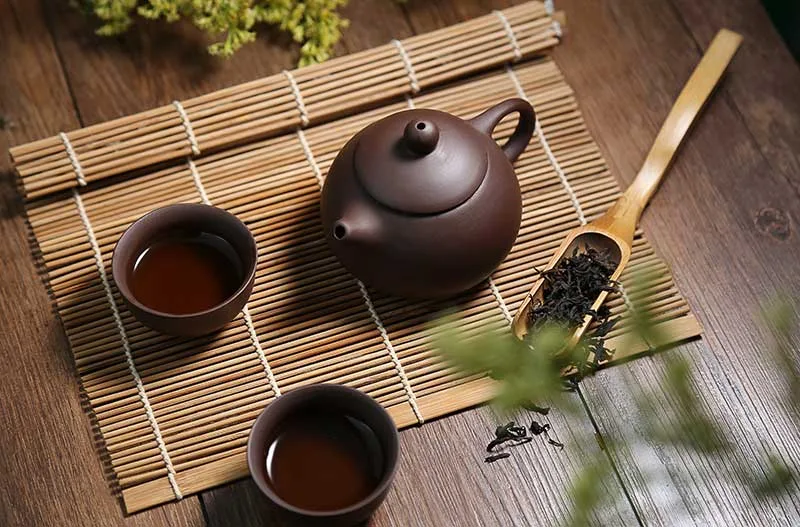
At the time of the Ming dynasty (between the 14th and 17th centuries), the teapot’s appearance changed greatly. Their design became more advanced with more varieties when built. With the construction of glazed Chinese in cities like Yixing, the teapots turned into something beyond a simple tool to brew tea. It became a symbol of beauty and art. The delicate paintings on teapots were of nature and mythical animals, which made them valuable objects. At the same time, the use of a teapot to drink tea entered the daily life of the Chinese and gradually became a custom and culture we see today.
Origin and Evolution
The Silk Road introduced both tea and the teapot to the Western world. From the 17th century, Europeans, who fell in love with tea and Eastern culture, started importing valuable porcelain teapots from China. Companies such as the Dutch East India Company brought Yixing and Jingdezhen handmade teapots to European courts. So the teapot became a part of the Western evening tea ritual.
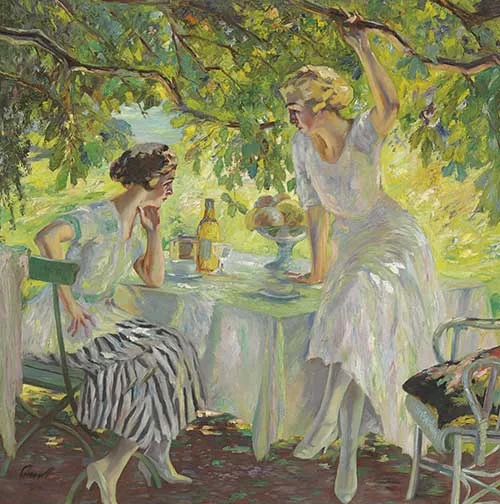
But Europe was not the only consumer. In England, as tea became more popular and local artisans began producing teapots. Initially, teapots were made from silver, a metal that, although beautiful, transferred too much heat and changed the taste of tea. During the Industrial Revolution, teapots entered mass production. Now not only the nobility, but also the middle classes could have flowery, classic, and fantasy teapots. This is where technology came to the aid of art, and the variety in color, shape, and material to produce teapots increased.
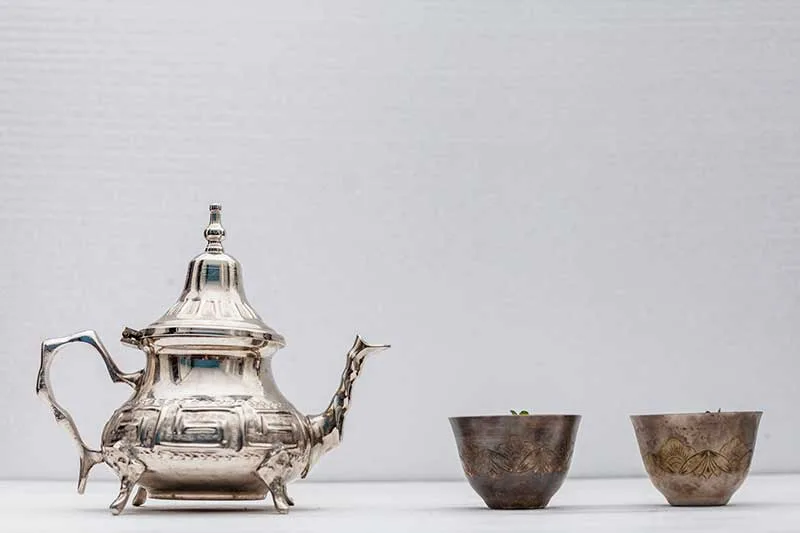
At the same time, the teapot found its own form in countries with rich tea culture such as Japan, India, Iran, and Türkiye. In Iran, glazed teapots with blue and turquoise designs became part of traditional tables. In Japan, iron teapots called Tetsubin (image below) were a symbol of simplicity and precision. In Turkey, twin teapots were made to brew both strong and weak tea. These teapots represented the culture of drinking tea in those countries.
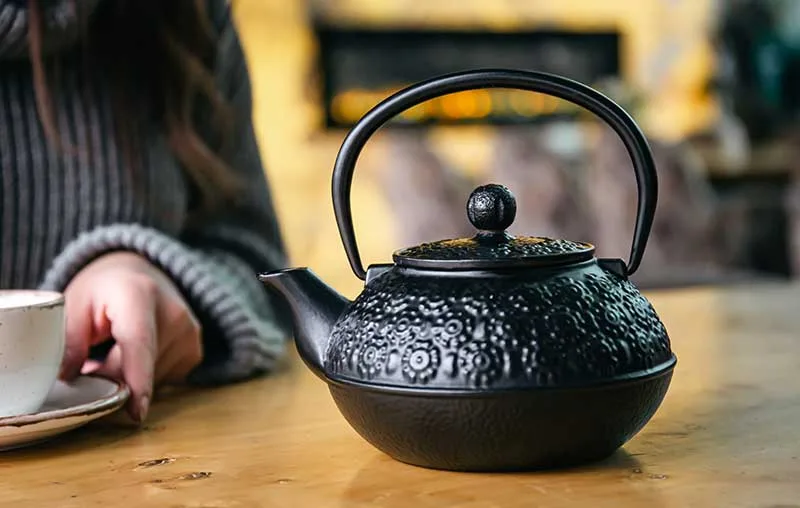
Different Types and Shapes of Teapots
With the expansion of the global market and people’s interest in a variety of herbs for brewing tea, teapots have also become more diverse than before. Below are just a few examples of common types of teapots we still see around and can purchase online or from antique stores:
- Clay and earthenware teapots: These types of teapots are very popular, as they both retain heat well and make the tea taste better with each use.
- Porcelain teapots: Porcelain teapots are also very popular because they don’t absorb the tea flavor and don’t change the aroma, making them a smart choice if you’re experimenting with different tea blends like detox teas. The delicate designs and paintings on these teapots are also beautiful and add a touch of elegance and beauty to any tea-drinking ceremony.
- Metal teapots: Cast iron and steel teapots have a special place in countries such as Japan and China. These teapots are sturdy and durable. They also retain heat for longer, which gives the tea a more traditional feel.
- Glass teapots: These are modern, transparent tea containers that allow you to see the tea as it is brewing. In today’s world, where beauty, simplicity, and minimalism are considered trends, glass teapots (a.k.a. Pyrex teapots) are very popular, especially among the younger tea aficionados.
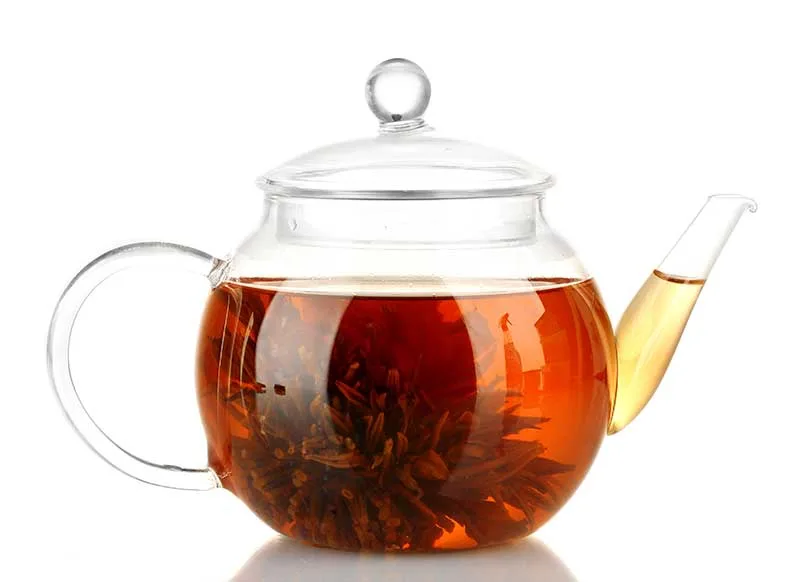
The designs of teapots, from traditional styles to simple and modern shapes, represent the combination of art and functionality. Some teapots are so beautiful and special that they are kept in museums or sold at auctions for very high prices. This shows that the teapot is not just a tool, but a symbol of art, culture, and an investment.
Conclusion
From ancient Chinese teapots to the glass teapots of today’s cafes, the teapot has come a long way. This change not only reflects how people drink tea, but also shows how much people’s tastes, needs, and views on the beauty and utility of utensils change. Today, teapots come in many shapes and materials; some old and traditional, some modern and new. As we said, every type of teapot has a different story. You may have an old clay teapot that you always brew tea with, or a glass teapot that you just love to look at. In a world where tea is still a symbol of peace, togetherness, and contemplation, the teapot helps to convey this feeling to us even more. When we look back at the teapot’s past, we realize that even the simple things in life can be full of memories, meaning, and beauty.
